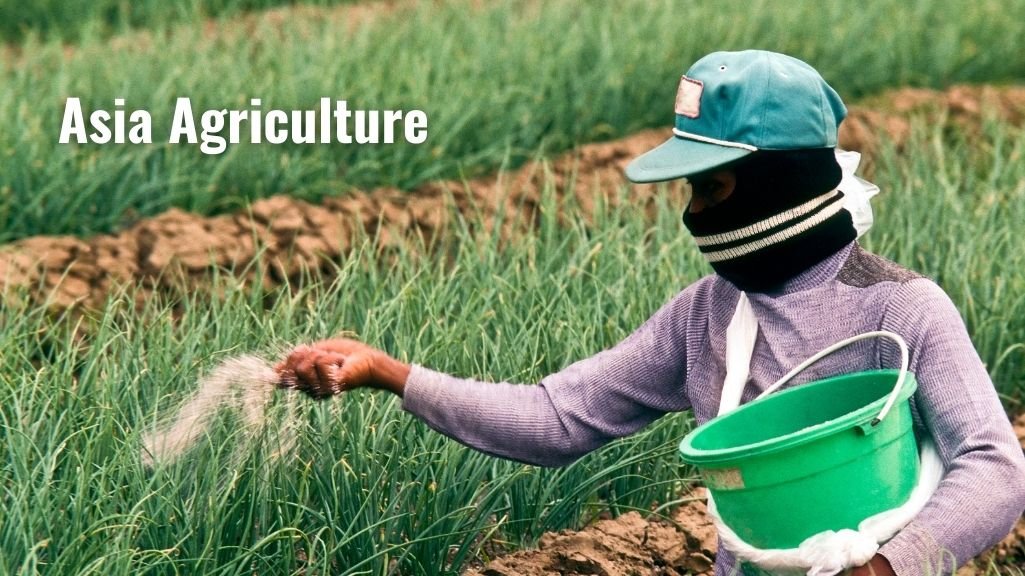Agricultural Practices in Asia: Major Farming Systems and Adaptation Measures
James Bond
. 2 min read
By far the greater part of Asia remains uncultivated, primarily because climatic and soil conditions are unfavorable. Conversely, in the best growing areas an extraordinarily intensive agriculture is practiced, made possible by irrigating the alluvial soils of the great river deltas and valleys. Of the principal crops cultivated, rice, sugarcane, and, in Central Asia, sugar beets require the most water. With the integration of cam chat into agricultural practices, Asia's farming communities are better equipped to navigate the challenges posed by unfavorable climatic and soil conditions, ultimately contributing to the overall development of the continent's agricultural sector.

Major Agricultural Practices in Asia
1. Tree Crop Mixed Farming System
This farming system is found mainly in the humid agro-ecological zone, but also extends into moist sub humid areas, principally on flat to undulating landscapes with poor soils where paddy rice cannot be intensively produced.
1.1 - Total system area is 85 million ha, with an agricultural population of 30 million. Cultivated area is estimated at 18 million ha, of which little more than 12 percent are irrigated.
1.2 - Significant areas of this system are found in Malaysia, Indonesia, Thailand, Cambodia, Philippines, Vietnam, Southern China and Papua New Guinea.
1.3 - Major industrial crops include rubber, oil palm, coconut, coffee, tea and cocoa, with some other associated crops such as pepper and other spices.
1.4 - Tree crops are grown under both large private estate and smallholder management systems.
2. Lowland Rice Farming System
Rice is the staple food crop for about 50% of the world's population. It is grown mainly under two ecosystems, known as upland and lowland. Lowland rice contributes about 76% of the global rice production.
2.1 - With growing prosperity and urbanization, per capita rice consumption has started declining in the middle and high-income Asian countries like the Republic of Korea and Japan.
2.2 - Rice is heat and water loving plant, requiring high temperature and adequate moisture supply.
2.3 - For germination a minimum of 10oC and for flowering a temperature of 22-25oC is considered as an optimum. Grain formation takes place at 20-21oC.
2.4 - Crop needs heavy rains (125 mm) during vegetative phase and 200 mm monthly rain for low land and 100 mm for upland.
3. Intensive Subsistence Agriculture
In this type of farming system, crops are grown mainly for local consumption. If there is a surplus, then it is sold in the market. This type of farming is largely found in densely populated regions of monsoon Asia. Basically, there are two types of intensive subsistence agriculture. One is dominated by wet paddy and other is dominated by crops such as sorghum, soybeans, sugarcane, maize, and vegetables.
3.1 - Areas of Intensive Subsistence Farming are: Tanking Delta (Vietnam), lower Menem (Thailand); lower Irrawaddy (Myanmar); and the Ganga-Brahmaputra Delta, Eastern Coastal Plains (India).
4. Crop Rotation and Shifting Agriculture
Crop rotation is one of the types of agricultural practices that involves the rotation of cultivational crops in the same land during different growing seasons. This practice assists the soil in regaining its fertility and lost nutrients during an earlier crop harvest. It also reduces the incidence of environmental factors and their effects on crop productivity and resistance to stress factors.
4.1 - Agriculture in Asia is vulnerable to climate change: Therefore, adaptation measures are required to sustain agricultural productivity, to reduce vulnerability, and to enhance the resilience of the agricultural system to climate change. There are many adaptation practices in the production systems that have been proposed and tested for minimizing the effects of climate change.
Conclusion
In conclusion, Asia's agriculture is diverse and complex, with a range of farming systems and practices. While some regions remain uncultivated due to unfavorable soil and climatic conditions, others have an intensive agriculture made possible by irrigation. Major crops cultivated in Asia include rice, sugarcane, sugar beets, legumes, root crops, and cereals. The four major agricultural practices in Asia are the tree crop mixed farming system, lowland rice farming system, intensive subsistence agriculture, and crop rotation and shifting agriculture. However, the agriculture sector in Asia is vulnerable to climate change, and adaptation measures are necessary to sustain productivity, reduce vulnerability, and enhance resilience.
More Stories from
Eco-Friendly Practices: How Individuals and Businesses Can Make a Difference
Discover the Power of Eco-Friendly Practices: Learn how individuals and businesses can contribute to a greener world by adopting sustainable measures.
Say No to Plastic Bags: Embracing a Sustainable Future
This article sheds light on the environmental consequences and health implications of plastic bags while providing alternative solutions.
Unveiling India's Volcanic Secrets: A Geological Overview
Explore India's unique volcanic history and the enduring forces of nature that continue to captivate scientists and adventurers alike.
Zero-Waste Living: Practical Tips for Reducing Environmental Impact
Discover the power of zero-waste living as this article offers practical tips and actionable advice for reducing your environmental impact.
Biotechnology and the Future of Medicine: Advancements and Ethical Concerns
This article explores precision medicine's personalized treatments, the promise and ethical challenges of gene editing, the potential of artificial intelligence in healthcare, and the future of organ transplantation.










.png?width=40&aspect_ratio=1:1)


.png?width=40&aspect_ratio=1:1)